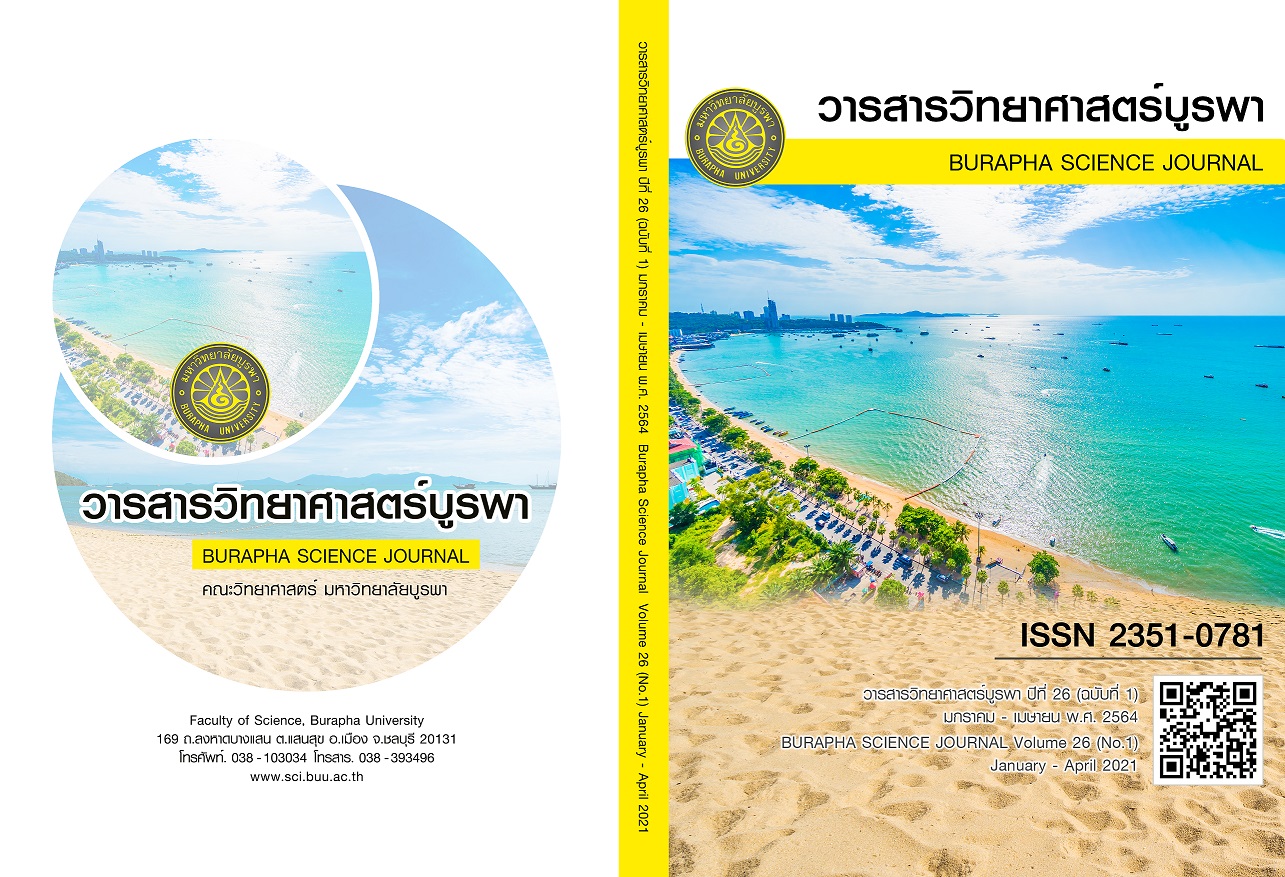Modified Two-stage Least Squares Methods for Estimating Parameters in Nonlinear Regression Models with Correlated Errors
Abstract
The two-stage least squares method is used to fit nonlinear regression models with correlated errors based on a stationary autoregressive process of order one. This method tends to underestimate the standard error of parameter estimates. Therefore, this paper presents modified two-stage least squares methods by using residuals from the one-way ANOVA model and estimating the correlation coefficient from the conditional least squares procedure to construct a weight matrix. These methods are used to estimate all parameters of nonlinear regression models. A simulation study covers a wide range of correlation levels on the models. The study result shows that the modified two-stage least squares methods can improve the efficient statistical inference since they produce unbiased estimators of parameters and reduce bias in estimating standard errors for parameter estimates. Keywords : nonlinear regression ; correlated errors ; least squares estimation ; the two-stage least squares methodReferences
Asikgil, B., & Erar, A. (2009). Modified two-stage least squares method. In Proceedings of the XIII International
Conference on Applied Stochastic Models and Data Analysis. (pp.124-128). Lithuania: Vilnius.
Bates, D.M, & Watts, D.G. (1988). Nonlinear regression analysis and its applications. New York: John Wiley
& Sons.
Bender, R., & Heinemann, L. (1995). Fitting nonlinear regression models with correlated errors to individual
pharmacodynamics data using SAS software. Journal of Pharmacokinetics and Biopharmaceutics,
23(1), 87-100.
Bender, R. (1995). Calculating summary measures of unimodal response curve by means of nonlinear regression
models. Journal of Theoretical Medicine, 2(1), 73-80.
Crawley, M.J. (2013). The R book. West Sussex: John Wiley & Sons.
Gallant, A.R., & Goebel, J.J. (1976). Nonlinear regression with autoregressive errors. Journal of the American
Statistical Association, 71(356), 961-967.
Izumo, M., Johnson, C.H., & Yamazaki, S. (2003). Circadian gene expression in mammalian fibroblasts revealed
by real-time luminescence reporting: Temperature compensation and damping. The National Academy
of Sciences of the USA, 100(26), 16089-16094.
Maier, B., Wendt, S., Vanselow, J.T., Wallach, T., Reischl, S., Oehmke, S., Schlosser, A., & Kramer,A. (2009).
A large-scale functional RNAi screen reveals a role for CK2 in the mammalian circadian clock.
Genes & Development, 23(1), 708-718.
Park, R.E., & Mitchell, B.M. (1980). Estimating the autocorrelated error model with trended data. Journal of
Econometrics, 13(2), 185-201.
Pukdee, W., Polsen, O., & Baksh, M.F. (2018) Improved methods for the analysis of circadian rhythms in
correlated gene expression data. Songklanakarin Journal of Science and Technology, 40(3), 692-700.
Pukdee, W., Polsen, O., & Baksh, M.F. (2020). A Modified Two-Stage Method for Parameter Estimation in Sinusoidal Models of Correlated Gene Expression Profiles. Thailand Statistician, 18(1), 77-89.
R Core Team. (2013). A language and environment for statistical computing. R Foundation for Statistical Computing. Retrieved March 3, 2015, from: http://www.R-project.org/
Ritz, C., & Streibig, J.C. (2008). Nonlinear regression with R. New York: Springer.
Seber, G.A.F., & Wild, C.J. (2003). Nonlinear regression. New York: Wiley.
Conference on Applied Stochastic Models and Data Analysis. (pp.124-128). Lithuania: Vilnius.
Bates, D.M, & Watts, D.G. (1988). Nonlinear regression analysis and its applications. New York: John Wiley
& Sons.
Bender, R., & Heinemann, L. (1995). Fitting nonlinear regression models with correlated errors to individual
pharmacodynamics data using SAS software. Journal of Pharmacokinetics and Biopharmaceutics,
23(1), 87-100.
Bender, R. (1995). Calculating summary measures of unimodal response curve by means of nonlinear regression
models. Journal of Theoretical Medicine, 2(1), 73-80.
Crawley, M.J. (2013). The R book. West Sussex: John Wiley & Sons.
Gallant, A.R., & Goebel, J.J. (1976). Nonlinear regression with autoregressive errors. Journal of the American
Statistical Association, 71(356), 961-967.
Izumo, M., Johnson, C.H., & Yamazaki, S. (2003). Circadian gene expression in mammalian fibroblasts revealed
by real-time luminescence reporting: Temperature compensation and damping. The National Academy
of Sciences of the USA, 100(26), 16089-16094.
Maier, B., Wendt, S., Vanselow, J.T., Wallach, T., Reischl, S., Oehmke, S., Schlosser, A., & Kramer,A. (2009).
A large-scale functional RNAi screen reveals a role for CK2 in the mammalian circadian clock.
Genes & Development, 23(1), 708-718.
Park, R.E., & Mitchell, B.M. (1980). Estimating the autocorrelated error model with trended data. Journal of
Econometrics, 13(2), 185-201.
Pukdee, W., Polsen, O., & Baksh, M.F. (2018) Improved methods for the analysis of circadian rhythms in
correlated gene expression data. Songklanakarin Journal of Science and Technology, 40(3), 692-700.
Pukdee, W., Polsen, O., & Baksh, M.F. (2020). A Modified Two-Stage Method for Parameter Estimation in Sinusoidal Models of Correlated Gene Expression Profiles. Thailand Statistician, 18(1), 77-89.
R Core Team. (2013). A language and environment for statistical computing. R Foundation for Statistical Computing. Retrieved March 3, 2015, from: http://www.R-project.org/
Ritz, C., & Streibig, J.C. (2008). Nonlinear regression with R. New York: Springer.
Seber, G.A.F., & Wild, C.J. (2003). Nonlinear regression. New York: Wiley.
Downloads
Published
2021-01-05
Issue
Section
Research Article

